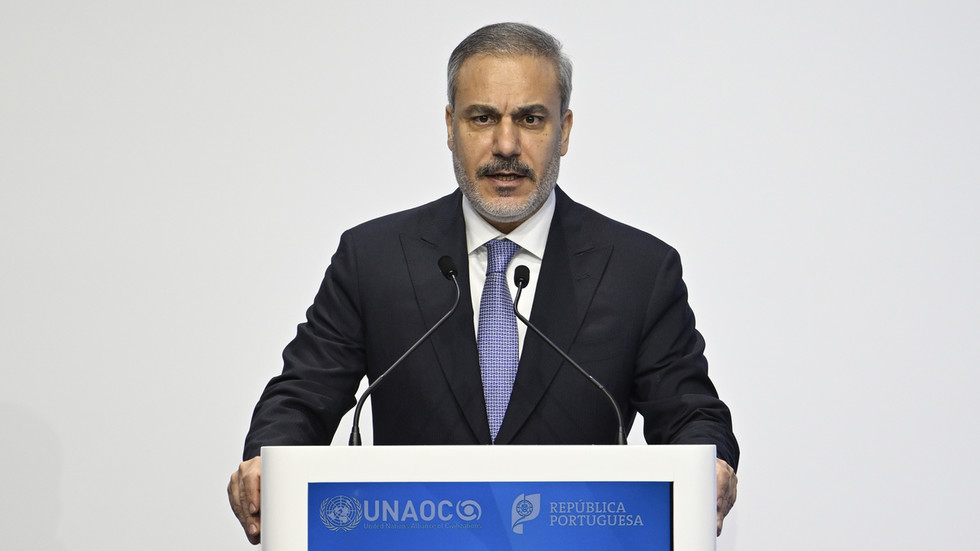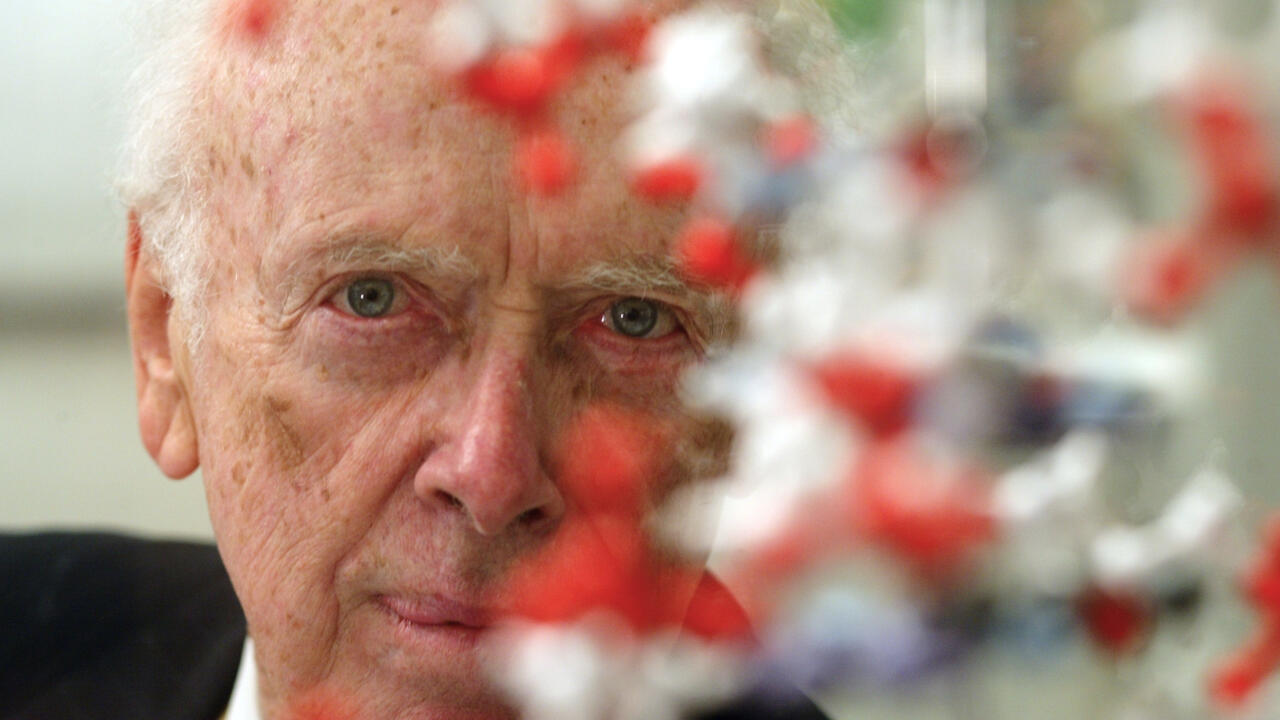Castor containers for high-level radioactive waste.
Ina Fassbender | Afp | Getty Images
Nuclear power is back, largely due to the skyrocketing demand for electricity, including big tech's hundreds of artificial intelligence data centers across the country and the reshoring of manufacturing. But it returns with an old and still-unsolved problem: storing all of the radioactive waste created as a byproduct of nuclear power generation.
In May, President Trump issued executive orders aimed at quadrupling the current nuclear output over the next 25 years by accelerating construction of both large conventional reactors and next-gen small modular reactors. Last week, the U.S. signed a deal with Westinghouse owners Cameco and Brookfield Asset Management to spend $80 billion to build nuclear plants across the country that could result in Westinghouse attempting to spinoff and IPO a stand-alone nuclear power company with the federal government as a shareholder.
There's a growing consensus among governments, businesses and the public that the time is right for a nuclear power renaissance, and even if the ambitious build-out could take a decade or more and cost hundreds of billion of dollars, it will be an eventual boon to legacy and start-up nuclear energy companies, the AI-fixated wing of the tech industry and investors banking on their success.
But there are plenty of reasons to be skeptical. Only two nuclear power plants have been built since 1990 — more than $15 billion over budget and years behind schedule — and they went online in just the last two years. Almost all of the 94 reactors currently operating in 28 states, generating about 20% of the nation's electricity, were built between 1967 and 1990. And though often unspoken, there's the prickly issue that's been grappled with ever since the first nuclear energy wave during the 1960s and '70s: how to store, manage and dispose of radioactive waste, the toxic byproduct of harnessing uranium to generate electricity — and portions of which remain hazardous for millennia.
Solutions, employing old and new technologies, are under development by a number of private and public companies and in collaboration with the Department of Energy, which is required by law to accept and store spent nuclear fuel.
The most viable solution for permanently storing nuclear waste was first proffered back in 1957 by the National Academy of Sciences. Its report recommended burying the detritus in deep underground repositories (as opposed to the long-since-abandoned notion of blasting it into low-Earth orbit). It wasn't until 1982, though, that Congress passed the Nuclear Waste Policy Act, assigning the DOE responsibility for finding such a site.
Five years later, lawmakers designated Yucca Mountain, a 6,700-foot promontory about 100 miles northwest of Las Vegas, Nevada, as the nation's sole geological repository. Thus began a contentious, years-long saga — involving the Nuclear Regulatory Commission, legislators, lawyers, geologic experts, industry officials and local citizens — that delayed, defunded and ultimately mothballed the project in 2010.
Other nations have moved forward with the idea. Finland, for instance, is nearing completion of the world's first permanent underground disposal site for its five reactors' waste. Sweden has started construction on a similar project, and France, Canada and Switzerland are in the early stages of their subterranean disposal sites.
Workers inspect the Repository in ONKALO, a deep geological disposal underground facility, designed to safely store nuclear waste, on May 2, 2023, on the island of Eurajoki, western Finland.
Jonathan Nackstrand | Afp | Getty Images
An American startup, Deep Isolation Nuclear, is combining the underground burial concept with oil-and-gas fracking techniques. The methodology, called deep borehole disposal, is achieved by drilling 18-inch vertical tunnels thousands of feet below ground, then turning horizontal. Corrosion-resistant canisters — each 16 feet long, 15 inches in diameter and weighing 6,000 pounds — containing nuclear waste are forced down into the horizontal sections, stacked side-by-side and stored, conceivably, for thousands of years.
Deep Isolation foresees co-locating its boreholes at active and decommissioned nuclear plants, according to CEO Rod Baltzer. "Eighty percent look like they have good shale or granite formations nearby," he said, referring to a geologic prerequisite. "That means we would not have to transport the waste" and the risk of highway or railway crashes unleashing radioactive material.
The company has received grants from the DOE's Advanced Research Projects Agency for Energy program, Baltzer said, and in July closed a reverse merger transaction, an alternative to an IPO for going public. Through that deal, he said, "we raised money for a full-scale demonstration project [in Cameron, Texas]. It will probably be early 2027 by the time we get that fully implemented."
Recycling radioactive waste for modular reactors
An entirely different, old-is-new-again technology, pioneered in the mid-1940s during the Manhattan Project, is gathering steam. It involves reprocessing spent fuel to extract uranium and other elements to create new fuel to power small modular reactors. The process is being explored by several startups, including Curio, Shine Technologies and Oklo. France has been utilizing reprocessed nuclear fuel at its vast network of reactors since the 1970s.
Oklo has gained attention among investors drawn to its two-pronged approach to nuclear energy. The company — which went public via a SPAC in 2024, after early-stage funding from OpenAI CEO Sam Altman, Peter Thiel's venture capital firm and others — announced in September that it is earmarking $1.68 billion to build an advanced fuel reprocessing facility in Oak Ridge, Tennessee. Concurrently, the company signed an agreement with the Tennessee Valley Authority "to explore how we can take used nuclear fuel sitting on its sites and convert it into fuel we can use in our reactors," said a company spokeswoman.

That refers to the TVA's three nuclear reactors — two in Tennessee, another in Alabama — as well as the other part of Oklo's business model, which focuses on constructing SMRs. In September, the company broke ground in Idaho Falls, Idaho, on its Aurora fast reactor, a type of SMR that will use reprocessed nuclear fuel. "We're working on [reprocessing] the fuel right now, so that we can turn on the plant around late 2027 or early 2028," the Oklo spokeswoman said. The separate Oak Ridge facility, she said, is expected to begin producing fuel by the early 2030s.
Oklo exemplifies both the promise and the perplexity associated with the rebirth of nuclear power. On one hand is the attraction of repurposing nuclear waste and building dozens of SMRs to electrify AI data centers and factories. On the other hand, the company has no facilities in full operation, is awaiting final approval from the NRC for its Aurora reactor, and is producing no revenue. Oklo's stock has risen nearly 429% this year, with a current market valuation of more than $16.5 billion, but share prices have fluctuated over the past month.
"It's a high-risk name because it's pre-revenue, and I anticipate that the company will need to provide more details around its Aurora reactor plans, as well as the [fuel reprocessing] program on the [November 11] earnings report call," said Jed Dorsheimer, an energy industry analyst at William Blair in a late October interview. "But we haven't changed our [outperform] rating on the name as of right now," he added.
Performance of nuclear power company Oklo shares over the past one-year period.
In the meantime, more than 95,000 metric tons of spent nuclear fuel (about 10,000 tons is from weapons programs) sits temporarily stockpiled aboveground in special water-filled pools or dry casks at 79 sites in 39 states, while about 2,000 metric tons are being produced every year. That's a lot of tonnage, but requires perspective. The Nuclear Energy Institute, the industry's trade association, states that the entirety of spent fuel produced in the U.S. since the 1950s would cover a football field to a depth of about 12 yards.
But because the DOE, despite its mandate, still hasn't found a permanent disposal facility for nuclear waste, taxpayers pay utilities up to $800 million every year in damages. Since 1998, the federal government has paid out $11.1 billion, and the tab is projected to reach as much as $44.5 billion in the future.
The DOE's Department of Nuclear Energy has initiated several programs to address nuclear waste, including coordination with Deep Isolation and Oklo. The agency declined to comment on its efforts in this area, citing the federal government shutdown.
Debate over size of the radiation problem
Opponents to nuclear power cite the well-documented accidents at Three Mile Island in Pennsylvania (1979), Chernobyl in Ukraine (1986) and Fukushima in Japan (2011) — all three which resulted in radiation leaks, and, at Chernobyl and Fukushima, related deaths — as reasons enough to halt building new reactors. Following Fukushima, Japan, Germany and some other nations shut down or suspended operations. Japan has since restarted its nuclear energy program, and its new prime minister, Sanae Takaichi, is expected to accelerate it.
There's also the viewpoint, related to climate change, that nuclear energy is a emissions-free power source — and unlike solar and wind runs 24/7/365 — that produces relatively manageable waste.
"If you walk up to recently discharged spent fuel and get really close to it, you'll probably get a lethal dose of radiation," said Allison Macfarlane, professor and director of the School of Public Policy and Global Affairs at the University of British Columbia, as well as the chair of the NRC from 2012–2014. "But is it this huge, massive problem? No, it's solvable." By comparison, she said, "we are under much graver threat from fossil fuel emissions than we are from nuclear waste."
As far as nuclear waste, "we need to put [it] deep underground," Macfarlane said.
That was the recommendation of the Blue Ribbon Commission on America's Nuclear Future, created by the Obama administration in 2010 after the Yucca Mountain project was defunded, on which she served. Macfarlane deems spent fuel reprocessing as far too expensive and a source of new waste streams, and dismisses deep borehole disposal as a "non-starter."
"You think you're going to be able to put waste packages down a hole and they're not going to get stuck on the way?" she said.
Inside the north portal to a five-mile tunnel in Yucca Mountain, 90 miles northwest of Las Vegas.
Las Vegas Review-journal | Tribune News Service | Getty Images
Macfarlane said that the Trump administration's fast-tracking of new reactors is neither realistic nor achievable, but "I certainly would not support shutting down the operating reactors. I'm not anti-nuclear, but I'm practical."
She added that while nuclear may not face the current intermittent production challenges of renewables, it is one of the most expensive forms of electricity production, especially compared to utility-scale solar, wind and natural gas.
Nonetheless, the rush to build new reactors — and generate even more waste — marches on alongside the data center boom. Google and NextEra Energy are teaming up to reopen Iowa's Duane Arnold Energy Center, a nuclear plant that closed five years ago. Microsoft and Constellation Energy plan to restart the Three Mile Island Unit 1 reactor in 2028. And Meta has signed a 20-year power purchase agreement with Constellation and its Clinton, Illinois, nuclear facility.
Although no SMRs have been completed yet in the U.S., several projects are under development by companies including NuScale Power, Holtec International, Kairos Power and X-Energy, which has received backing from Amazon. The only SMR actually under construction is from Bill Gates' co-founded TerraPower, in Kemmerer, Wyoming, which aims to be operational by the end of 2030.
Those long timelines alone should be a deterrent, said Tim Judson, executive director of the Nuclear Information Resource Service, a nonprofit advocate for a nuclear-free world. "It is fanciful to think that nuclear energy is going to be helpful in dealing with the increases in electricity demand from data centers," he said, "because nuclear power plants take so long to build and the data centers are being built today."
And then there's the waste issue, Judson said. "I'm not sure that the tech industry has really thought through whether they want to be responsible for managing nuclear waste at their data center sites."
But you can count Gates, the big tech billionaire who was backing nuclear even before the AI data center boom, as having not only thought about the waste problem, but dismissed it as major impediment. "The waste problems should not be a reason to not do nuclear," Gates said in an interview with the German business publication Handelsblatt back in 2023. "The amount of waste involved ... that's not a reason not to do nuclear. ... Say the U.S. was completely nuclear-powered — it's a few rooms worth of total waste. So it's not a gigantic thing," Gates said.












 English (US) ·
English (US) ·